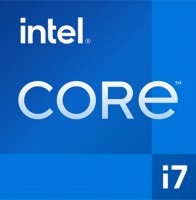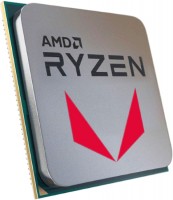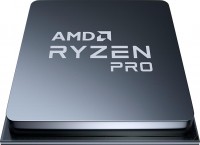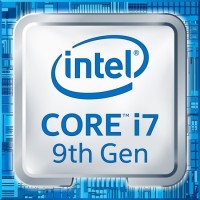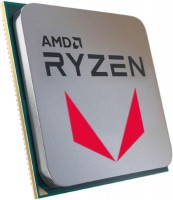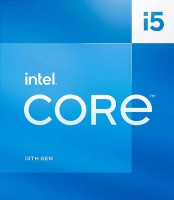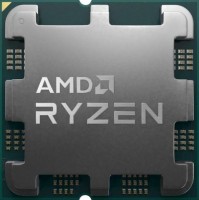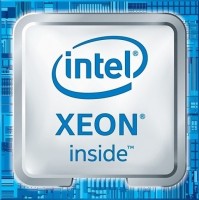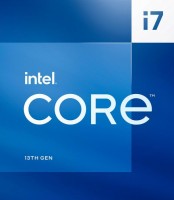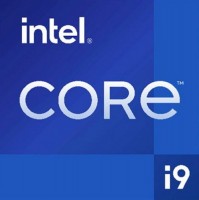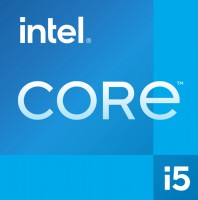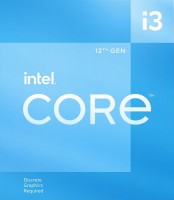CPUs Intel intel core
All CPUs Advanced filters → |
You might be interested in
Articles, reviews, useful tips
All materials
How to choose a CPU?
How to choose the right CPU for any task, from spreadsheets to modern games and work applications

Building an advanced gaming PC for Forspoken
Powerful PC with Ryzen 7 processor, GeForce RTX 4070 Ti graphics card and liquid cooling system

Air or liquid cooling — which is better?
Which type of cooling to choose depending on the purpose of the PC

What is more profitable: a ready-made PC or assembled in parts?
Pros and cons of buying a ready-made PC and assembling the system unit yourself

Overclocking zone: truths and myths about PC overclocking
Myth busters against misconceptions about overclocking the processor, graphics card and RAM

Ryzen 7 7800X3D review: the new king of PC gaming
Let's see how AMD's new chip with "3D" cache breaks the competition in games
CPUs: specifications, types
Show all
Series
The series to which the processor belongs.
A series usually combines chips that are similar in general level, characteristics, features and purpose — for example, low-cost processors with low power consumption, mid-range models with advanced graphics capabilities, etc. It is most convenient to start choosing a processor by determining the series that is optimal for you fit; however, it is worth considering that chips of the same series may belong to different generations.
Here are the most popular series of processors from Intel:
— Celeron. Low-cost-level processors, the most simple and inexpensive consumer-level desktop chips from Intel, with the appropriate characteristics. They can combine a CPU with an integrated graphics module.
— Pentium. A series of low-cost desktop processors from Intel, somewhat more advanced than the Celeron.
— Core i3. A series of entry-level and mid-level processors, the most budgetary series in the Core ix family. They are based on a dual-core architecture, have a third-level cache and an integrated graphics processor.
— Core i5. A series of mid-range processors, both in general and in the Core ix family. The architecture is dual or quad-core, have a third-level cache, many models are also equipped with an integrated graphics chip.
—...Core i7. A series of performant processors; before the introduction of the i9 line in May 2017, they were the most advanced in the Core ix family. They have at least 4 cores(up to 8 in top solutions), a volumetric level 3 cache and integrated graphics.
— Core i9. High performance desktop processors introduced in 2017; the most advanced Core ix series and the most powerful line of desktop CPUs at the time of release. They have from 10 cores (from 6 in mobile versions).
— Xeon. A series of high-performance processors designed primarily for servers. Well suited for multiprocessor systems. The number of cores is 2, 4 or 6, many models have a third-level cache.
AMD's most popular CPU series these days include Ryzen 3, Ryzen 5, Ryzen 7, Ryzen 9, Ryzen Threadripper, EPYC.
— A series. A series of so-called hybrid processors from AMD, also called APU — Accelerated Processing Unit. They are mainly high-end solutions with advanced integrated graphics, the capabilities of which in some models are comparable to discrete graphics cards. In particular, for the latest A-Series processors, the possibility of full-fledged work with many popular online games at maximum settings is claimed.
— EPIC. A series of professional processors from AMD, designed primarily for servers; are positioned, in particular, as solutions optimized for use in cloud services. Built on the Zen microarchitecture, just like desktop Ryzen (see below).
— FX. A family of high-end performance processors from AMD, the world's first series to introduce an octa-core processor for PCs. However, there are relatively modest quad-core ones. Another feature is liquid cooling, which is included in the standard delivery of some models: classic air cooling is not enough given the high power and the corresponding TDP (see below).
— AMD Fusion. The entire Fusion processor family was originally created as integrated graphics devices, combining a central processing unit and a graphics card in one chip; such chips are called APU — Accelerated Processing Unit, and their graphics performance is often comparable to inexpensive discrete graphics cards. Modern Fusion processors are marked with the letter A and an even number — from A4 to A12; the higher the number, the more advanced the series is.
— Athlon. The Athlon marking itself is used in many processor families from AMD, including those that are completely obsolete. Nowadays, this name can mean both Athlon X4 and "regular" Athlons with the code name specified — usually Bristol Ridge or Raven Ridge. All these CPUs are designed mainly for consumer-level systems. At the same time, X4 chips were released in 2015 and are positioned as relatively inexpensive and at the same time performant solutions for the FM + socket. Athlon Bristol Ridge processors appeared in 2016 and became the latest series of "athlons" based on the Excavator microarchitecture (28-nm process technology). The next generation, Raven Ridge, used the Zen microarchitecture, which introduced a number of key improvements — in particular, a 14nm process technology and multi-threading support. Both of these series belong to the middle level.
— Ryzen 3. The third series of processors from AMD built on the Zen microarchitecture (after Ryzen 7 and Ryzen 5). The first chips of this series were released in the summer of 2017 and became the most low-cost solutions among all Ryzen. They are produced using the same technologies as the older series, however, half of the computing cores are deactivated in Ryzen 3. Nevertheless, this line includes quite performant devices, including those designed for gaming configurations and workstations.
— Ryzen 5. A series of processors from AMD, built on the Zen microarchitecture. The second series on this architecture, released in April 2017 as a more affordable alternative to Ryzen 7 chips. Ryzen 5 chips have slightly more modest performance characteristics (in particular, a lower clock speed and, in some models, L3 cache size). Otherwise, they are completely similar to the "sevens" and are also positioned as high-performance chips for gaming and workstations. See "Ryzen 7" below for details.
— Ryzen 7. AMD's first series of processors based on the Zen microarchitecture. It was introduced in March 2017. In general, Ryzen chips (all series) are promoted as high-end solutions for gamers, developers, graphic designers and video editors. One of the main differences between Zen and previous microarchitectures was the use of simultaneous multithreading (see "SMT (multithreading)"), due to which the number of operations per clock was significantly increased at the same clock frequency. In addition, each core received its own floating point unit, the speed of the first level cache has increased, and the L3 cache in Ryzen 7 is nominally 16 MB.
— Ryzen 9. A series introduced in 2019 with the release of third-generation Matisse chips based on the Zen microarchitecture. Like all Ryzen, it is intended primarily for high-performance gaming and workstations, gaming systems and PC enthusiasts; at the same time, this series became the top among all “ryzens”, displacing Ryzen 7 from this position. For example, the first Ryzen 9 models had 12 cores and 24 threads, in later ones this number was increased to 16/32, respectively.
— Ryzen Threadripper. AMD's High-Performance Gaming and Creativity Series: Threadripper chips are specifically designed for high-performance gaming systems and workstations, according to manufacturers. They have 8 cores and support multithreading.
In addition to the series, modern processors are also divided into generations, according to the release time. At the same time, one generation includes several series, and one series can be produced within several generations. See "Code Name" for more on this.
A series usually combines chips that are similar in general level, characteristics, features and purpose — for example, low-cost processors with low power consumption, mid-range models with advanced graphics capabilities, etc. It is most convenient to start choosing a processor by determining the series that is optimal for you fit; however, it is worth considering that chips of the same series may belong to different generations.
Here are the most popular series of processors from Intel:
— Celeron. Low-cost-level processors, the most simple and inexpensive consumer-level desktop chips from Intel, with the appropriate characteristics. They can combine a CPU with an integrated graphics module.
— Pentium. A series of low-cost desktop processors from Intel, somewhat more advanced than the Celeron.
— Core i3. A series of entry-level and mid-level processors, the most budgetary series in the Core ix family. They are based on a dual-core architecture, have a third-level cache and an integrated graphics processor.
— Core i5. A series of mid-range processors, both in general and in the Core ix family. The architecture is dual or quad-core, have a third-level cache, many models are also equipped with an integrated graphics chip.
—...Core i7. A series of performant processors; before the introduction of the i9 line in May 2017, they were the most advanced in the Core ix family. They have at least 4 cores(up to 8 in top solutions), a volumetric level 3 cache and integrated graphics.
— Core i9. High performance desktop processors introduced in 2017; the most advanced Core ix series and the most powerful line of desktop CPUs at the time of release. They have from 10 cores (from 6 in mobile versions).
— Xeon. A series of high-performance processors designed primarily for servers. Well suited for multiprocessor systems. The number of cores is 2, 4 or 6, many models have a third-level cache.
AMD's most popular CPU series these days include Ryzen 3, Ryzen 5, Ryzen 7, Ryzen 9, Ryzen Threadripper, EPYC.
— A series. A series of so-called hybrid processors from AMD, also called APU — Accelerated Processing Unit. They are mainly high-end solutions with advanced integrated graphics, the capabilities of which in some models are comparable to discrete graphics cards. In particular, for the latest A-Series processors, the possibility of full-fledged work with many popular online games at maximum settings is claimed.
— EPIC. A series of professional processors from AMD, designed primarily for servers; are positioned, in particular, as solutions optimized for use in cloud services. Built on the Zen microarchitecture, just like desktop Ryzen (see below).
— FX. A family of high-end performance processors from AMD, the world's first series to introduce an octa-core processor for PCs. However, there are relatively modest quad-core ones. Another feature is liquid cooling, which is included in the standard delivery of some models: classic air cooling is not enough given the high power and the corresponding TDP (see below).
— AMD Fusion. The entire Fusion processor family was originally created as integrated graphics devices, combining a central processing unit and a graphics card in one chip; such chips are called APU — Accelerated Processing Unit, and their graphics performance is often comparable to inexpensive discrete graphics cards. Modern Fusion processors are marked with the letter A and an even number — from A4 to A12; the higher the number, the more advanced the series is.
— Athlon. The Athlon marking itself is used in many processor families from AMD, including those that are completely obsolete. Nowadays, this name can mean both Athlon X4 and "regular" Athlons with the code name specified — usually Bristol Ridge or Raven Ridge. All these CPUs are designed mainly for consumer-level systems. At the same time, X4 chips were released in 2015 and are positioned as relatively inexpensive and at the same time performant solutions for the FM + socket. Athlon Bristol Ridge processors appeared in 2016 and became the latest series of "athlons" based on the Excavator microarchitecture (28-nm process technology). The next generation, Raven Ridge, used the Zen microarchitecture, which introduced a number of key improvements — in particular, a 14nm process technology and multi-threading support. Both of these series belong to the middle level.
— Ryzen 3. The third series of processors from AMD built on the Zen microarchitecture (after Ryzen 7 and Ryzen 5). The first chips of this series were released in the summer of 2017 and became the most low-cost solutions among all Ryzen. They are produced using the same technologies as the older series, however, half of the computing cores are deactivated in Ryzen 3. Nevertheless, this line includes quite performant devices, including those designed for gaming configurations and workstations.
— Ryzen 5. A series of processors from AMD, built on the Zen microarchitecture. The second series on this architecture, released in April 2017 as a more affordable alternative to Ryzen 7 chips. Ryzen 5 chips have slightly more modest performance characteristics (in particular, a lower clock speed and, in some models, L3 cache size). Otherwise, they are completely similar to the "sevens" and are also positioned as high-performance chips for gaming and workstations. See "Ryzen 7" below for details.
— Ryzen 7. AMD's first series of processors based on the Zen microarchitecture. It was introduced in March 2017. In general, Ryzen chips (all series) are promoted as high-end solutions for gamers, developers, graphic designers and video editors. One of the main differences between Zen and previous microarchitectures was the use of simultaneous multithreading (see "SMT (multithreading)"), due to which the number of operations per clock was significantly increased at the same clock frequency. In addition, each core received its own floating point unit, the speed of the first level cache has increased, and the L3 cache in Ryzen 7 is nominally 16 MB.
— Ryzen 9. A series introduced in 2019 with the release of third-generation Matisse chips based on the Zen microarchitecture. Like all Ryzen, it is intended primarily for high-performance gaming and workstations, gaming systems and PC enthusiasts; at the same time, this series became the top among all “ryzens”, displacing Ryzen 7 from this position. For example, the first Ryzen 9 models had 12 cores and 24 threads, in later ones this number was increased to 16/32, respectively.
— Ryzen Threadripper. AMD's High-Performance Gaming and Creativity Series: Threadripper chips are specifically designed for high-performance gaming systems and workstations, according to manufacturers. They have 8 cores and support multithreading.
In addition to the series, modern processors are also divided into generations, according to the release time. At the same time, one generation includes several series, and one series can be produced within several generations. See "Code Name" for more on this.
Code name
This parameter characterizes, firstly, the technical process (see above), and secondly, some features of the internal structure of processors. A new (or at least updated) codename is introduced to the market with each new CPU generation; chips of the same architecture are "coevals", but may belong to different series (see above). At the same time, one generation can include both one and several code names.
Here are the most common Intel codenames today: Cascade Lake-X (10th gen), Comet Lake (10th gen), Comet Lake Refresh (10th generation), Rocket Lake (11th generation), Alder Lake (12th generation), Raptor Lake (13th generation), Raptor Lake Refresh (14th generation).
For AMD, this list includes Zen+ Picasso, Zen2 Matisse, Zen2 Renoir, Zen3 Vermeer, Zen3 Cezanne, Zen4 Raphael and Zen4 Phoenix.
Here are the most common Intel codenames today: Cascade Lake-X (10th gen), Comet Lake (10th gen), Comet Lake Refresh (10th generation), Rocket Lake (11th generation), Alder Lake (12th generation), Raptor Lake (13th generation), Raptor Lake Refresh (14th generation).
For AMD, this list includes Zen+ Picasso, Zen2 Matisse, Zen2 Renoir, Zen3 Vermeer, Zen3 Cezanne, Zen4 Raphael and Zen4 Phoenix.
Socket
The type of connector (socket) for installing the processor on the motherboard. For normal compatibility, it is necessary that the CPU and motherboard match the socket type; before buying one and the other, this point should be clarified separately
The following sockets are relevant for Intel processors today: 1150, 1155, 1356, 2011, 2011 v3, 2066, 1151, 1151 v2, 3647, 1200 and 1700.
In turn, AMD processors are equipped with the following types of connectors: <AM3/AM3+, FM2/FM2+, AM4, AM5, TR4/TRX4, WRX8.
The following sockets are relevant for Intel processors today: 1150, 1155, 1356, 2011, 2011 v3, 2066, 1151, 1151 v2, 3647, 1200 and 1700.
In turn, AMD processors are equipped with the following types of connectors: <AM3/AM3+, FM2/FM2+, AM4, AM5, TR4/TRX4, WRX8.
Lithography
The technical process by which the CPU is manufactured.
The parameter is usually specified by the size of the individual semiconductor elements (transistors) that make up the processor integrated circuit. The smaller their size, the more advanced the technical process is considered: miniaturization of individual elements allows you to reduce heat generation, reduce the overall size of the processor and at the same time increase its flow Rate. CPU manufacturers are trying to move towards reducing the technical process, and the newer the processor, the lower the numbers you can see at this point.
The technical process is measured in nanometers (nm). In the modern arena of central processors, solutions made using the 7 nm, 10 nm, 12 nm process technology predominate, high-end CPU models are manufactured using the 4 nm and 5 nm process technology, 14 nm and 22 nm solutions are still afloat, and are rapidly fading into the background, but 28 nm and 32 nm occur periodically.
The parameter is usually specified by the size of the individual semiconductor elements (transistors) that make up the processor integrated circuit. The smaller their size, the more advanced the technical process is considered: miniaturization of individual elements allows you to reduce heat generation, reduce the overall size of the processor and at the same time increase its flow Rate. CPU manufacturers are trying to move towards reducing the technical process, and the newer the processor, the lower the numbers you can see at this point.
The technical process is measured in nanometers (nm). In the modern arena of central processors, solutions made using the 7 nm, 10 nm, 12 nm process technology predominate, high-end CPU models are manufactured using the 4 nm and 5 nm process technology, 14 nm and 22 nm solutions are still afloat, and are rapidly fading into the background, but 28 nm and 32 nm occur periodically.
In box
This parameter does not so much indicate the difference in technical characteristics as it describes the packaging and computer Hardware.
- OEM. The tray package, or OEM, provides that the processor is supplied without a cooling system (CO) and without a branded box - the packaging is usually a simple antistatic bag. You need to select and install cooling for such a CPU separately. In addition, components in tray packaging often have a shorter warranty period than in the box version, and their additional equipment is more meager. On the other hand, such solutions are noticeably cheaper, and the absence of CO allows you to select it separately, without relying on the manufacturer’s choice.
— BOX (without cooler). Processors packed in branded boxes, but not equipped with cooling systems (CO). Such packaging is more expensive than OEM, but the warranty period for “boxed” chips is usually much longer (for example, three years instead of one). The absence of a cooler, on the one hand, requires additional efforts to find and install a coolant; on the other hand, cooling can be selected according to your own criteria, without relying on the manufacturer’s choice. However, it is worth considering that when installing a cooler yourself, it is difficult to achieve the same efficiency from it as with a factory installation; This is especially critical if the CPU is planned to be intensively overc...locked; for such modes it is better to choose a box package with a cooler.
— BOX (with cooler). Processors packed in branded boxes and equipped with cooling systems (CO). Box packaging itself is more expensive than OEM, but this is compensated by a number of advantages - in particular, more extensive packaging and a longer warranty period. As for the presence of a cooler in the kit, it further increases the overall cost of the CPU, but eliminates the need to bother with the selection and installation of a separate cooling system. It is worth noting that the factory installation of CO allows you to achieve higher efficiency than independent installation, so for high loads (including overclocking) this particular configuration option is best suited. On the other hand, before purchasing, you need to check whether there is enough space in the case for a cooler: complete coolers can be quite bulky, and removing them can be difficult.
— MPK (with cooler, without box). The multipack package, or MPK for short, implies the delivery of a processor with a standard boxed cooling cooler, but without a box and accompanying documentation. The processor is usually packaged in a simple antistatic bag. The MPK package is more expensive than OEM due to the presence of a cooling system, but cheaper than BOX (with cooler) due to the absence of a box. At the same time, the multipack kit usually has a shorter warranty period than the BOX delivery option (with a cooler).
- OEM. The tray package, or OEM, provides that the processor is supplied without a cooling system (CO) and without a branded box - the packaging is usually a simple antistatic bag. You need to select and install cooling for such a CPU separately. In addition, components in tray packaging often have a shorter warranty period than in the box version, and their additional equipment is more meager. On the other hand, such solutions are noticeably cheaper, and the absence of CO allows you to select it separately, without relying on the manufacturer’s choice.
— BOX (without cooler). Processors packed in branded boxes, but not equipped with cooling systems (CO). Such packaging is more expensive than OEM, but the warranty period for “boxed” chips is usually much longer (for example, three years instead of one). The absence of a cooler, on the one hand, requires additional efforts to find and install a coolant; on the other hand, cooling can be selected according to your own criteria, without relying on the manufacturer’s choice. However, it is worth considering that when installing a cooler yourself, it is difficult to achieve the same efficiency from it as with a factory installation; This is especially critical if the CPU is planned to be intensively overc...locked; for such modes it is better to choose a box package with a cooler.
— BOX (with cooler). Processors packed in branded boxes and equipped with cooling systems (CO). Box packaging itself is more expensive than OEM, but this is compensated by a number of advantages - in particular, more extensive packaging and a longer warranty period. As for the presence of a cooler in the kit, it further increases the overall cost of the CPU, but eliminates the need to bother with the selection and installation of a separate cooling system. It is worth noting that the factory installation of CO allows you to achieve higher efficiency than independent installation, so for high loads (including overclocking) this particular configuration option is best suited. On the other hand, before purchasing, you need to check whether there is enough space in the case for a cooler: complete coolers can be quite bulky, and removing them can be difficult.
— MPK (with cooler, without box). The multipack package, or MPK for short, implies the delivery of a processor with a standard boxed cooling cooler, but without a box and accompanying documentation. The processor is usually packaged in a simple antistatic bag. The MPK package is more expensive than OEM due to the presence of a cooling system, but cheaper than BOX (with cooler) due to the absence of a box. At the same time, the multipack kit usually has a shorter warranty period than the BOX delivery option (with a cooler).
Cores
The number of physical cores provided in the processor design. The core is the part of the processor that is responsible for executing the instruction stream. The presence of multiple cores allows the CPU to work simultaneously with several tasks, which has a positive effect on performance. Initially, each physical core was intended to operate with one thread of commands, and the number of threads corresponded to the number of cores. However, today there are many processors that support multi-threading technologies and are capable of executing two streams of commands on each core at once. For more information about this, see “Amount of threads”.
Desktop processors have 2 cores (2 threads), as a rule, typical for budget models. 2 cores (4 threads) and 4 cores are typical for inexpensive mid-class solutions. 4 cores (8 threads), 6 cores, 6 cores (12 threads), 8 cores - a strong mid-range. 8 cores (16 threads), 10 cores, 12 cores, 16 cores and more are characteristic features of advanced models, including processors for servers and workstations.
At the same ti...me, it is worth considering that the actual capabilities of the CPU are determined not only by this parameter, but also by other characteristics - primarily by series and generation / architecture (see the corresponding paragraphs). It is not uncommon for situations where a more advanced and/or new dual-core processor turns out to be more powerful than a quad-core chip from a more modest series or an earlier architecture. So it makes sense to compare CPUs by the number of cores within the same series and generation.
Desktop processors have 2 cores (2 threads), as a rule, typical for budget models. 2 cores (4 threads) and 4 cores are typical for inexpensive mid-class solutions. 4 cores (8 threads), 6 cores, 6 cores (12 threads), 8 cores - a strong mid-range. 8 cores (16 threads), 10 cores, 12 cores, 16 cores and more are characteristic features of advanced models, including processors for servers and workstations.
At the same ti...me, it is worth considering that the actual capabilities of the CPU are determined not only by this parameter, but also by other characteristics - primarily by series and generation / architecture (see the corresponding paragraphs). It is not uncommon for situations where a more advanced and/or new dual-core processor turns out to be more powerful than a quad-core chip from a more modest series or an earlier architecture. So it makes sense to compare CPUs by the number of cores within the same series and generation.
Performance
Number of high-performance Performance Cores (or P-Cores) in Intel processors since 12th generation (Alder Lake). P-cores have support for Hyper-Threading and take on the execution of resource-intensive tasks of the first plan. Those. they are directly responsible for the performance level of the processor as a whole.
Efficient
The number of energy-efficient Efficient Cores (or E-Cores) in Intel processors since the Alder Lake generation. They are relatively small and can be added in clusters of four — on a silicon chip, such groups occupy the same area as one high-performance core. E-cores work out basic background loads.
Threads
The number of instruction streams that the processor can execute at the same time.
Initially, each physical core (see "Number of cores") was intended to execute one thread of instructions, and the number of threads corresponded to the number of cores. However, there are many processors today that support Hyper-threading or SMT (see below) and can run two threads on each core at once. In such models, the number of threads is twice the number of cores — for example, 8 threads will be indicated in a quad-core chip.
In general, a higher number of threads, other things being equal, has a positive effect on speed and efficiency, but increases the cost of the processor.
Initially, each physical core (see "Number of cores") was intended to execute one thread of instructions, and the number of threads corresponded to the number of cores. However, there are many processors today that support Hyper-threading or SMT (see below) and can run two threads on each core at once. In such models, the number of threads is twice the number of cores — for example, 8 threads will be indicated in a quad-core chip.
In general, a higher number of threads, other things being equal, has a positive effect on speed and efficiency, but increases the cost of the processor.
Multithreading
Processor support for Hyper-threading.
Hyper-threading is actually a variant of simultaneous multithreading (SMT) developed by Intel and used in its chips since 2002. This technology is used to optimize the load on each physical processor core. Its key principle (simplified) is that each such core is defined by the system as 2 logical cores — for example, the system “sees” a dual-core processor as a quad-core one. At the same time, each physical core constantly switches between two logical cores, in fact, between two threads of commands: when a delay occurs in one thread (for example, in case of an error or while waiting for the result of the previous instruction), the core does not idle, but starts executing the second thread commands. Thanks to this technology, the response time of the processor is reduced, and in server systems, stability is increased with numerous connected users.
In AMD processors, a similar function is used under the original name SMT (see below).
Hyper-threading is actually a variant of simultaneous multithreading (SMT) developed by Intel and used in its chips since 2002. This technology is used to optimize the load on each physical processor core. Its key principle (simplified) is that each such core is defined by the system as 2 logical cores — for example, the system “sees” a dual-core processor as a quad-core one. At the same time, each physical core constantly switches between two logical cores, in fact, between two threads of commands: when a delay occurs in one thread (for example, in case of an error or while waiting for the result of the previous instruction), the core does not idle, but starts executing the second thread commands. Thanks to this technology, the response time of the processor is reduced, and in server systems, stability is increased with numerous connected users.
In AMD processors, a similar function is used under the original name SMT (see below).
Clock speed
The number of cycles per second that the processor produces in its normal operating mode. A clock is a single electrical impulse used to process data and synchronize the processor with the rest of the computer system. Different operations may require fractions of a clock or several clocks, but anyway, the clock frequency is one of the main parameters characterizing the performance and speed of the processor — all other things being equal, a processor with a higher clock frequency will work faster and better cope with significant loads. At the same time, it should be taken into account that the actual performance of the chip is determined not only by the clock frequency, but also by a number of other characteristics — from the series and architecture (see the relevant paragraphs) to the number of cores and support for special instructions. So it makes sense to compare by clock frequency only chips with similar characteristics belonging to the same series and generation.
Performance-core Base
The base clock speed of high-performance P-cores for Intel processors on a hybrid architecture.
Efficient-core Base
The base clock rate of the energy-efficient E-cores for Intel APUs starting from the 12th generation (Alder Lake).
TurboBoost / TurboCore
The maximum processor clock speed that can be reached when running in Turbo Boost or Turbo Core overclocking mode.
The name "Turbo Boost" is used for the overclocking technology used by Intel, "Turbo Core" for the solution from AMD. The principle of operation in both cases is the same: if some cores are not used or work under a load below the maximum, the processor can transfer part of the load from the loaded cores to them, thus increasing computing power and performance. Operation in this mode is characterized by an increase in the clock frequency, and it is indicated in this case.
Note that we are talking about the maximum possible clock frequency — modern CPUs are able to regulate the operating mode depending on the situation, and with a relatively low load, the actual frequency may be lower than the maximum possible. See "Clock frequency" for the general meaning of this parameter.
The name "Turbo Boost" is used for the overclocking technology used by Intel, "Turbo Core" for the solution from AMD. The principle of operation in both cases is the same: if some cores are not used or work under a load below the maximum, the processor can transfer part of the load from the loaded cores to them, thus increasing computing power and performance. Operation in this mode is characterized by an increase in the clock frequency, and it is indicated in this case.
Note that we are talking about the maximum possible clock frequency — modern CPUs are able to regulate the operating mode depending on the situation, and with a relatively low load, the actual frequency may be lower than the maximum possible. See "Clock frequency" for the general meaning of this parameter.
TurboBoost Max 3.0
Processor clock speed when running in TurboBoost Max 3.0 overclocking mode.
This mode is a kind of add-on over the original Turbo Boost (see above). The basic principle of its operation is that the most critical and "heavy" tasks are sent for execution to the fastest and most unloaded processor cores. This provides additional optimization of the CPU and increases its speed. As in normal Turbo Boost mode, the clock speed increases when using this function, so it is indicated separately.
This mode is a kind of add-on over the original Turbo Boost (see above). The basic principle of its operation is that the most critical and "heavy" tasks are sent for execution to the fastest and most unloaded processor cores. This provides additional optimization of the CPU and increases its speed. As in normal Turbo Boost mode, the clock speed increases when using this function, so it is indicated separately.
Performance-core Max
Maximum Turbo clock speed for Performance Cores from the Intel Hybrid Processor League.
Efficient-core Max
Peak clock rate for the Efficient cores from Intel processors based on hybrid architecture.
L1 cache
The amount of Level 1 (L1) cache provided by the processor.
Cache is an intermediate memory buffer into which the most frequently used data from RAM is written when the processor is running. This speeds up access to them and has a positive effect on system performance. The larger the cache, the more data can be stored in it for quick access and the higher the performance. Level 1 cache has the highest performance and the smallest volume — up to 128 KB. It is an integral part of any processor.
Cache is an intermediate memory buffer into which the most frequently used data from RAM is written when the processor is running. This speeds up access to them and has a positive effect on system performance. The larger the cache, the more data can be stored in it for quick access and the higher the performance. Level 1 cache has the highest performance and the smallest volume — up to 128 KB. It is an integral part of any processor.
L2 cache
The amount of Level 2 (L2) cache provided by the processor.
Cache is an intermediate memory buffer into which the most frequently used data from RAM is written during processor operation. This speeds up access to them and has a positive effect on system performance. The larger the cache, the more data can be stored in it for quick access and the higher the performance. Level 2 cache volume can reach 12 MB, the vast majority of modern processors have such a cache.
Cache is an intermediate memory buffer into which the most frequently used data from RAM is written during processor operation. This speeds up access to them and has a positive effect on system performance. The larger the cache, the more data can be stored in it for quick access and the higher the performance. Level 2 cache volume can reach 12 MB, the vast majority of modern processors have such a cache.
L3 cache
The amount of cache level 3 (L3) provided in the processor.
Cache is an intermediate memory buffer into which the most frequently used data from RAM is written when the processor is running. This speeds up access to them and has a positive effect on system performance. The larger the cache, the more data can be stored in it for quick access and the higher the performance.
Cache is an intermediate memory buffer into which the most frequently used data from RAM is written when the processor is running. This speeds up access to them and has a positive effect on system performance. The larger the cache, the more data can be stored in it for quick access and the higher the performance.
IGP
Model of the integrated video core installed in the processor. See "Integrated Graphics" for details on the core itself. And knowing the name of the graphics chip model, you can find its detailed characteristics and clarify the performance of the processor when working with video.
In terms of specific models, Intel processors use HD Graphics, specifically 510, 530, 610, 630 and UHD Graphics with models 610, 630, 730, 750, 770. AMD chips, in turn, can carry Radeon Graphics, Radeon R5 series, Radeon R7 series, and Radeon RX Vega graphics cards.
At the same time, processors without a graphics core are appropriate for purchase if you plan to fully assemble a PC with a graphics card. In this case, overpaying for a processor with a graphics core does not make sense.
In terms of specific models, Intel processors use HD Graphics, specifically 510, 530, 610, 630 and UHD Graphics with models 610, 630, 730, 750, 770. AMD chips, in turn, can carry Radeon Graphics, Radeon R5 series, Radeon R7 series, and Radeon RX Vega graphics cards.
At the same time, processors without a graphics core are appropriate for purchase if you plan to fully assemble a PC with a graphics card. In this case, overpaying for a processor with a graphics core does not make sense.
Front side bus
The system bus frequency supported by the processor is, in fact, the clock frequency at which data is exchanged between the processor and the rest of the system.
This parameter is key to determining the overall CPU clock speed (see above): this frequency is equal to the system bus frequency multiplied by the multiplier (see below).
This parameter is key to determining the overall CPU clock speed (see above): this frequency is equal to the system bus frequency multiplied by the multiplier (see below).
TDP
The amount of heat generated by the processor during normal operation. This parameter determines the requirements for the cooling system necessary for the normal operation of the processor, therefore it is sometimes called TDP — thermal design power, literally “thermal (cooling) system power”. Simply put, if the processor has a heat dissipation of 60 W, it needs a cooling system that can remove at least this amount of heat. Accordingly, the lower the TDP, the lower the requirements for the cooling system. Low TDP values(up to 50 W) are especially critical for PCs that do not have the ability to install powerful cooling systems — in particular, systems in compact cases where a powerful cooler simply does not fit.
Thermal Dissipation Max(TDP)
Different processors have different temperature limits. The peak value of heat dissipation in watts is indicated when the processor is operating under load conditions. The higher the heat dissipation rate, the more powerful the cooling system must be selected and the higher the requirements for the power subsystem on the computer motherboard. For more information on heat dissipation (TDP), see the relevant paragraph.
Instruction
Support by the processor of various sets of additional commands. These can be instructions that optimize the operation of the processor as a whole or with applications of a certain type (for example, multimedia, or 64-bit), prevent certain types of viruses from running on the computer, etc. Each manufacturer has its own assortment of instructions for CPUs.
Multiplier
The coefficient on the basis of which the value of the processor clock frequency is displayed. The latter is calculated by multiplying the multiplier by the system bus frequency (see System bus frequency). For example, with a system bus frequency of 533 MHz and a multiplier of 4, the processor clock speed will be approximately 2.1 GHz.
Free multiplier
The ability to change the value of the multiplier (see Multiplier) of the processor at will. Unlike overclocking ("overclocking") in its classical sense, often associated with hacking processor settings, a free multiplier makes it possible to "legally" and quite easily change the processor clock frequency — most often this is implemented through BIOS settings. At the same time, do not forget that the increased frequency of the processor requires the appropriate efficiency of the cooling system.
PCI Express
Universal interface for connecting internal peripherals. Provides generally higher speeds than SATA. In fact, the supported data transfer rate may be different — depending on the version of the interface and the number of lines (data transmission channels). Version 3.0 provides speeds of about 1 GB/s per lane, PCI-E 4.0 about 2 GB/s per lane, and 5.0 up to 4 GB/s per lane.
Max. operating temperature
The maximum temperature at which the processor is able to effectively continue to work — when heated above this temperature, most modern processors are turned off in order to avoid the unpleasant consequences of overheating (up to the burning of the chip). The higher the maximum operating temperature, the less demanding the processor is on the cooling system, however, the cooling power anyway should not be lower than TDP (see Heat Dissipation (TDP)).
Passmark CPU Mark
The result shown by the processor in the Passmark CPU Mark test.
Passmark CPU Mark is a comprehensive test that checks not only the gaming capabilities of the CPU, but also its performance in other modes, based on which it displays the overall score; this score can be used to fairly reliably evaluate the processor as a whole.
Passmark CPU Mark is a comprehensive test that checks not only the gaming capabilities of the CPU, but also its performance in other modes, based on which it displays the overall score; this score can be used to fairly reliably evaluate the processor as a whole.
Geekbench 4
The result shown by the processor in the test (benchmark) Geekbench 4.
Geekbench 4 is a comprehensive cross-platform test that allows, among other things, to determine the efficiency of the processor in various modes. At the same time, according to the developers, the verification modes are as close as possible to various real tasks that the processor has to solve. The result is indicated in points: the more points — the more powerful the CPU, while the difference in numbers corresponds to the actual difference in performance ("twice the result — twice the power").
Note that the benchmark in Geekbench 4 is the Intel Core i7-6600U processor with a clock frequency of 2.6 GHz. Its power is estimated at 4000 points, and the performance of other tested CPUs is already compared with it.
Geekbench 4 is a comprehensive cross-platform test that allows, among other things, to determine the efficiency of the processor in various modes. At the same time, according to the developers, the verification modes are as close as possible to various real tasks that the processor has to solve. The result is indicated in points: the more points — the more powerful the CPU, while the difference in numbers corresponds to the actual difference in performance ("twice the result — twice the power").
Note that the benchmark in Geekbench 4 is the Intel Core i7-6600U processor with a clock frequency of 2.6 GHz. Its power is estimated at 4000 points, and the performance of other tested CPUs is already compared with it.
Cinebench R15
The result shown by the processor in the test (benchmark) Cinebench R15.
Cinebench is a test designed to test the capabilities of the processor and graphics card. The creator of this benchmark, Maxon, is also known as the developer of the Cinema 4D 3D editor; this determined the features of testing. So, in addition to purely mathematical tasks, when using Cinebench R15, the processor is loaded with processing high-quality three-dimensional graphics. Another interesting feature is the extensive support for multithreading — the test allows you to fully check the power of chips that process up to 256 threads at a time.
Traditionally, for CPU benchmarks, the test results are indicated in points (more precisely, points — PTS). The more points scored by the CPU, the higher its performance.
Cinebench is a test designed to test the capabilities of the processor and graphics card. The creator of this benchmark, Maxon, is also known as the developer of the Cinema 4D 3D editor; this determined the features of testing. So, in addition to purely mathematical tasks, when using Cinebench R15, the processor is loaded with processing high-quality three-dimensional graphics. Another interesting feature is the extensive support for multithreading — the test allows you to fully check the power of chips that process up to 256 threads at a time.
Traditionally, for CPU benchmarks, the test results are indicated in points (more precisely, points — PTS). The more points scored by the CPU, the higher its performance.
Max. RAM
The maximum amount of random access memory (RAM) that the CPU can work with correctly.
The larger the amount of RAM — the higher the power required to work correctly with it. Accordingly, any CPU will inevitably be limited in this parameter. However, even relatively modest modern CPUs can have very impressive maximum RAM volumes, calculated in tens of gigabytes. So, the most popular CPUs with support for 64 GB and 128 GB RAM.
The larger the amount of RAM — the higher the power required to work correctly with it. Accordingly, any CPU will inevitably be limited in this parameter. However, even relatively modest modern CPUs can have very impressive maximum RAM volumes, calculated in tens of gigabytes. So, the most popular CPUs with support for 64 GB and 128 GB RAM.
Max. DDR3 speed
The highest frequency of DDR3 RAM modules that the processor is compatible with.
A higher frequency of memory modules, on the one hand, increases the speed of their work, on the other hand, it puts forward increased requirements for the processing power of the processor. Therefore, modern CPUs have limitations on the frequency of "RAM". As for DDR3, this is one of the most common modern types of RAM; it is gradually being superseded by the more advanced DDR4, but is still very popular.
A higher frequency of memory modules, on the one hand, increases the speed of their work, on the other hand, it puts forward increased requirements for the processing power of the processor. Therefore, modern CPUs have limitations on the frequency of "RAM". As for DDR3, this is one of the most common modern types of RAM; it is gradually being superseded by the more advanced DDR4, but is still very popular.
Max. DDR4 speed
The highest frequency of DDR4 RAM modules that the processor is compatible with.
A higher frequency of memory modules, on the one hand, increases the speed of their work, on the other hand, it puts forward increased requirements for the processing power of the processor. Therefore, modern CPUs have limitations on the frequency of "RAM".
The DDR4 standard was introduced in 2010 (the final version — in 2012) as the successor to the popular DDR3.
A higher frequency of memory modules, on the one hand, increases the speed of their work, on the other hand, it puts forward increased requirements for the processing power of the processor. Therefore, modern CPUs have limitations on the frequency of "RAM".
The DDR4 standard was introduced in 2010 (the final version — in 2012) as the successor to the popular DDR3.
Max. DDR5 speed
The highest frequency of DDR5 RAM modules that the processor is compatible with.
DDR5 is being implemented in hardware to replace the fourth version of the DDR standard from the end of 2020. A typical "fork" of frequencies for modules of this generation is the range of 4800-6400 MHz. The maximum frequency of DDR5 memory reaches 8400 MHz.
DDR5 is being implemented in hardware to replace the fourth version of the DDR standard from the end of 2020. A typical "fork" of frequencies for modules of this generation is the range of 4800-6400 MHz. The maximum frequency of DDR5 memory reaches 8400 MHz.
Channels
The maximum number of channels supported by the processor when working with RAM.
The simplest mode for modern PCs is single-channel (when the entire amount of RAM is perceived as a single array). It is supported by all processors and motherboards. However, most often there are "motherboards" for 2 channels, and in more advanced models this number can reach 4. Multi-channel mode significantly improves performance, but requires the use of specialized components, including processors with support for the appropriate number of channels.
The simplest mode for modern PCs is single-channel (when the entire amount of RAM is perceived as a single array). It is supported by all processors and motherboards. However, most often there are "motherboards" for 2 channels, and in more advanced models this number can reach 4. Multi-channel mode significantly improves performance, but requires the use of specialized components, including processors with support for the appropriate number of channels.


